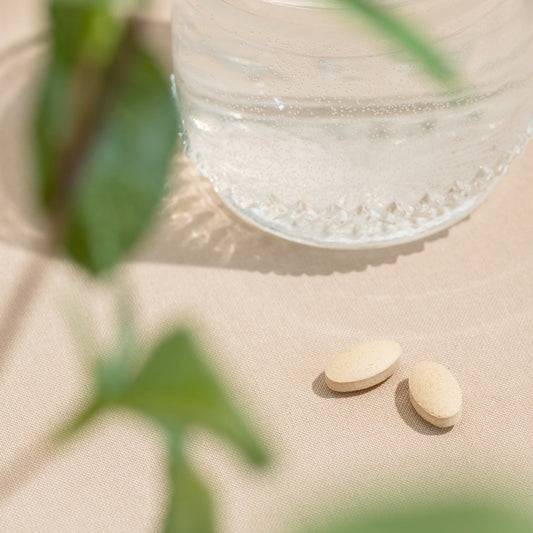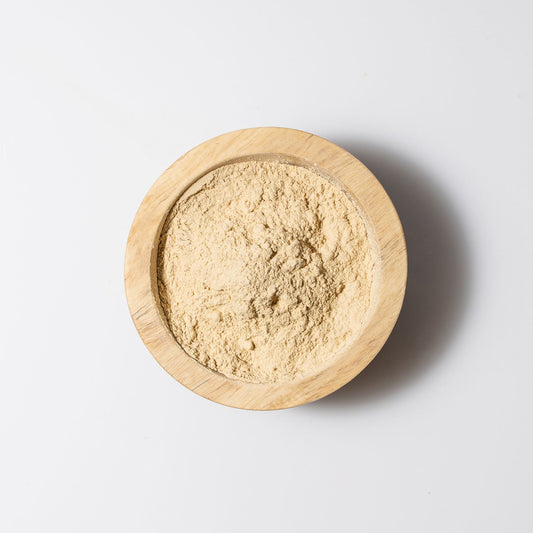When you think about
However, as we evolve to meet the needs of the times, such as climate change and a growing demand for Ayurvedic herbs, we have been experimenting with a concept called bioregional Ayurveda—and we're here to share with you our results, particularly our harvest of the famous adaptogen ashwagandha, right here in Southern Oregon.

Bioregional Ayurveda at the Banyan Botanicals Farm
Bioregional Ayurveda is basically the idea of applying Ayurvedic concepts to the bioregion in which we reside, and therefore cultivating a direct relationship with the climate, foods, and plants where we call home.
As an Ayurvedic company that ships the majority of our herbs from overseas, we find ourselves grappling with a conundrum—how do we keep providing these amazing herbs without creating such a massive carbon footprint? How can we care for our customers while also better caring for the earth?
In answer to these questions, Banyan has had a longtime vision of beginning to cultivate some of the traditional Ayurvedic herbs here in the United States, as well as using more native western herbs in a way that is rooted in the wisdom of Ayurveda.
After many years of dreaming, we finally found the perfect piece of land in Williams, Oregon, and began the Banyan Botanicals Farm, where we are able to put bioregional Ayurveda into practice.
Thanks to the expert guidance of Tyler Wauters, our Farm Director, and Tommy Redding, our Farm Operations Manager, we hit the ground running, planting a variety of different herbs to find out which ones would survive and flourish in the climate and growing conditions of this region.
Among the many varieties that we grew this year, which included bhringaraj, shankapushpi, tulsi, and chamomile, to name a few, one of the most successful crops was our beloved ashwagandha!
Just as this plant acts as an adaptogen in the body, it also tends to be adaptable to many different regions, climates, and growing conditions. And what it loves the most—hot, dry summers— is something that we have plenty of here in Southern Oregon.
As we speculated, it did exquisitely well in this climate and we were rewarded with an abundant field full of this amazing herb.
Harvesting Ashwagandha
It is always amazing to watch the full lifecycle of a plant, from seed to harvest, over which time the most humble, tiny seed can transform into a unique and fully grown plant, complete with stems, leaves, roots, flowers, fruits, and a whole new round of seeds—each one equipped to do the same thing all over again the next year.
Tyler, Tommy, and the farm team started our ashwagandha seeds in the greenhouse around the time of the spring equinox, before transferring them out to the fields in May.
By the end of summer they had grown into healthy, robust plants, complete with thick, soft, furry green leaves and a plethora of small calyces, each enclosing a small red berry.
Although these shiny berries are mildly toxic, the roots of the plant offer the potent herbal benefits that make ashwagandha such a powerful and popular herb.
According to Tyler, once these calyces begin to turn from green to brown, you know it is time to harvest the roots. Here in Southern Oregon, that time came in late September and early October, close to the time of the autumn equinox. So we went to work!
Harvesting ashwagandha root requires a good digging fork, a lot of persistence, and a willingness to get your hands dirty (literally). Even after the root is finally dislodged from the earth, it still needs to be cut down into small pieces to be ready for processing, thoroughly washed, and dried for about ten days.
It takes approximately twelve plants, and a lot of hard work, just to produce one pound of dried bulk ashwagandha. But the final reward is well worth the effort.
These roots are chock-full of health benefits, and there's something extra special about knowing that they were grown organically and sustainably, here on this very continent, without needing to be shipped overseas.
We are thrilled to share that the ashwagandha we grew and harvested on the Banyan Botanicals Farm will be going straight into our products in the year ahead, including some of our herbal oils such as Vata Massage Oil. So next time you find yourself performing
We hope you are as excited as we are for this huge and exciting step in the Banyan journey!









